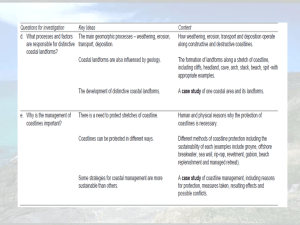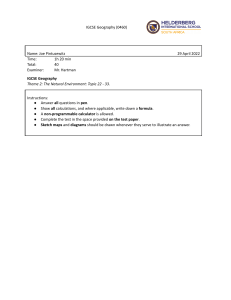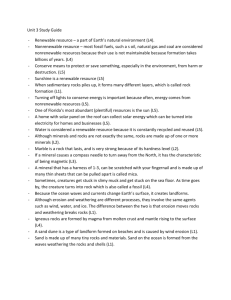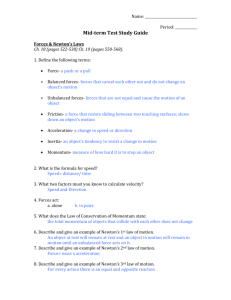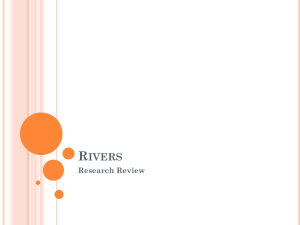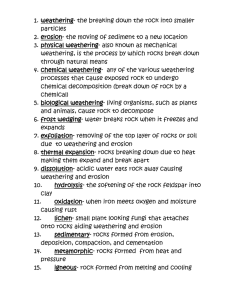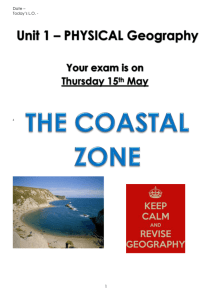1.Coastal Erosion Processes
advertisement
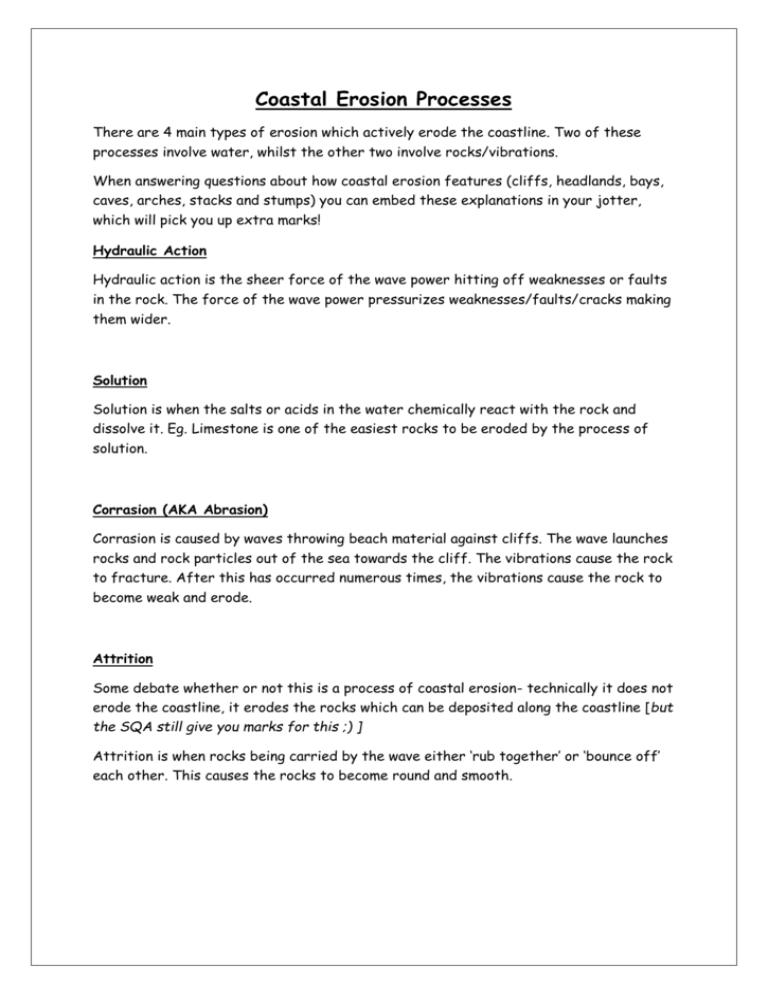
Coastal Erosion Processes There are 4 main types of erosion which actively erode the coastline. Two of these processes involve water, whilst the other two involve rocks/vibrations. When answering questions about how coastal erosion features (cliffs, headlands, bays, caves, arches, stacks and stumps) you can embed these explanations in your jotter, which will pick you up extra marks! Hydraulic Action Hydraulic action is the sheer force of the wave power hitting off weaknesses or faults in the rock. The force of the wave power pressurizes weaknesses/faults/cracks making them wider. Solution Solution is when the salts or acids in the water chemically react with the rock and dissolve it. Eg. Limestone is one of the easiest rocks to be eroded by the process of solution. Corrasion (AKA Abrasion) Corrasion is caused by waves throwing beach material against cliffs. The wave launches rocks and rock particles out of the sea towards the cliff. The vibrations cause the rock to fracture. After this has occurred numerous times, the vibrations cause the rock to become weak and erode. Attrition Some debate whether or not this is a process of coastal erosion- technically it does not erode the coastline, it erodes the rocks which can be deposited along the coastline [but the SQA still give you marks for this ;) ] Attrition is when rocks being carried by the wave either ‘rub together’ or ‘bounce off’ each other. This causes the rocks to become round and smooth.


